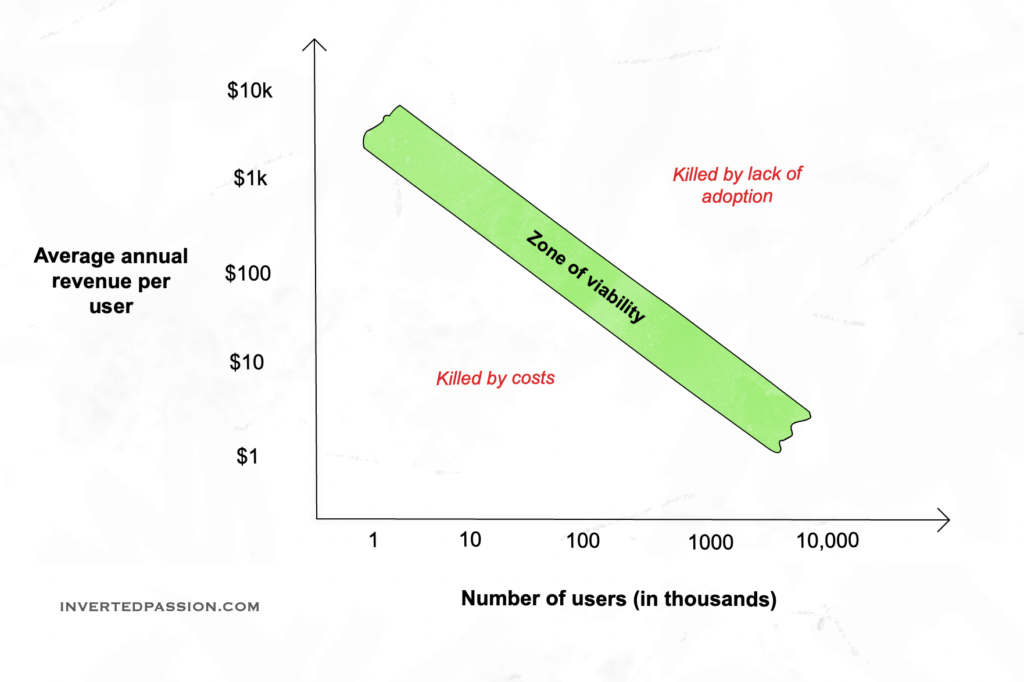The price of products determines all other components of the business. This happens because price influences the number and type of available customers in the market (higher the price, lower the number of customers and the corresponding premium positioning that’s required).
This in turn determines:
- the distribution channels you need to tap in order to reach the target market,
- cost of customer acquisition,
- cost and nature of sales and service process, and
- all that in turn determines the organizational structure.
In short, setting the price of a product is akin to choosing a highly specific playbook for building your business.

This tight relationship between price and business model suggests that a mismatch between the two means failure. The most obvious case is keeping the price low for a market that has a limited number of customers. The limited revenue opportunity means that a startup can easily get killed by costs. The other case is keeping a price higher for a market that has a very large number of customers. In such cases, competition usually drives the price down and a higher price usually means slower or no adoption of that product which can result in failure.
Business models that thrive in the narrow zone of viability quickly become the norm. A typical example of this is how similar enterprise B2B companies are to each other. The reason for this is that price of the product and the business model needed to sell it are tightly interlinked.
All B2B companies have highly paid salespeople who chase the same Fortune 500 companies via the same marketing channels (events, cold calls, or analysts). All such companies have account managers who are experts in relationship building and communication. The user interface takes a back seat for enterprise products as customization and adaptation to an enterprise are a higher priority.
Contrast this with how B2B companies targeting small businesses operate. Since their target market comprises tens of thousands of businesses, each of whom pays tens of dollars per month, they cannot afford to sell via a salesperson. They need to rely on platforms like Adwords or Google search for customer acquisition and their products’ user interface has to be slick enough for self-service.
This is also why best B2C companies do not spend on marketing because they simply can’t afford to since revenue per user for them is extremely tiny. Facebook, Google, TikTok — all of them acquire users using word of mouth or viral/network effects.
Remember: a large business (>$100mn annual revenue) can be built for a product at any price. But as soon as either price is chosen the market and business model gets chosen for you (and versa).
This essay is part of my book on mental models for startup founders.
Join 150k+ followers
Follow @paraschopra